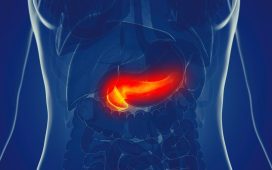Compared with oral naltrexone, implant also improved HIV outcomes among those with opioid dependence
FRIDAY, April 19, 2019 (HealthDay News) — Slow-release implantable naltrexone is associated with better outcomes than the oral drug for HIV-positive patients with an opioid addiction, according to a study published in the April issue of The Lancet HIV.
Evgeny Krupitsky, M.D., from the University of Saint Petersburg in Russia, and colleagues conducted a 48-week, phase 3 trial with 200 men and women addicted to opioids who were starting antiretroviral therapy for HIV. Participants were randomly assigned to addiction treatment with a naltrexone implant and oral naltrexone placebo (implant group) or oral naltrexone and a placebo implant (oral group).
The researchers found that at week 24, 38 participants in the implant group and 35 in the oral group had viral loads <400 copies per mL (risk ratio [RR], 1.1; 95 percent confidence interval, 0.76 to 1.56; P = 0.77), while at week 48, 66 participants in the implant group and 50 in the oral group had viral loads <400 copies per mL (RR, 1.32; 95 percent confidence interval, 1.04 to 1.68; P = 0.045). There were three deaths in the implant group (one each due to heart disease, trauma, and AIDS) and four in the oral group (two overdoses, one pancreatic cancer, and one AIDS). The overdose deaths happened nine to 10 months after the last naltrexone dose.
“Further development and formal approval of these implants in a wider range of cultural settings has the potential to provide an effective and meaningful HIV and opioid treatment option for these patients,” a coauthor said in a statement.
Fidelity Capital provided Prodetoxon (naltrexone) at a reduced price and Prodetoxon placebo at no charge, and two authors disclosed financial ties to pharmaceutical and medical device companies.
Editorial (subscription or payment may be required)
Copyright © 2019 HealthDay. All rights reserved.








